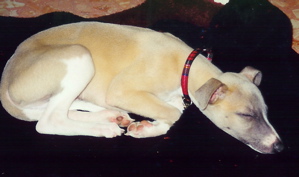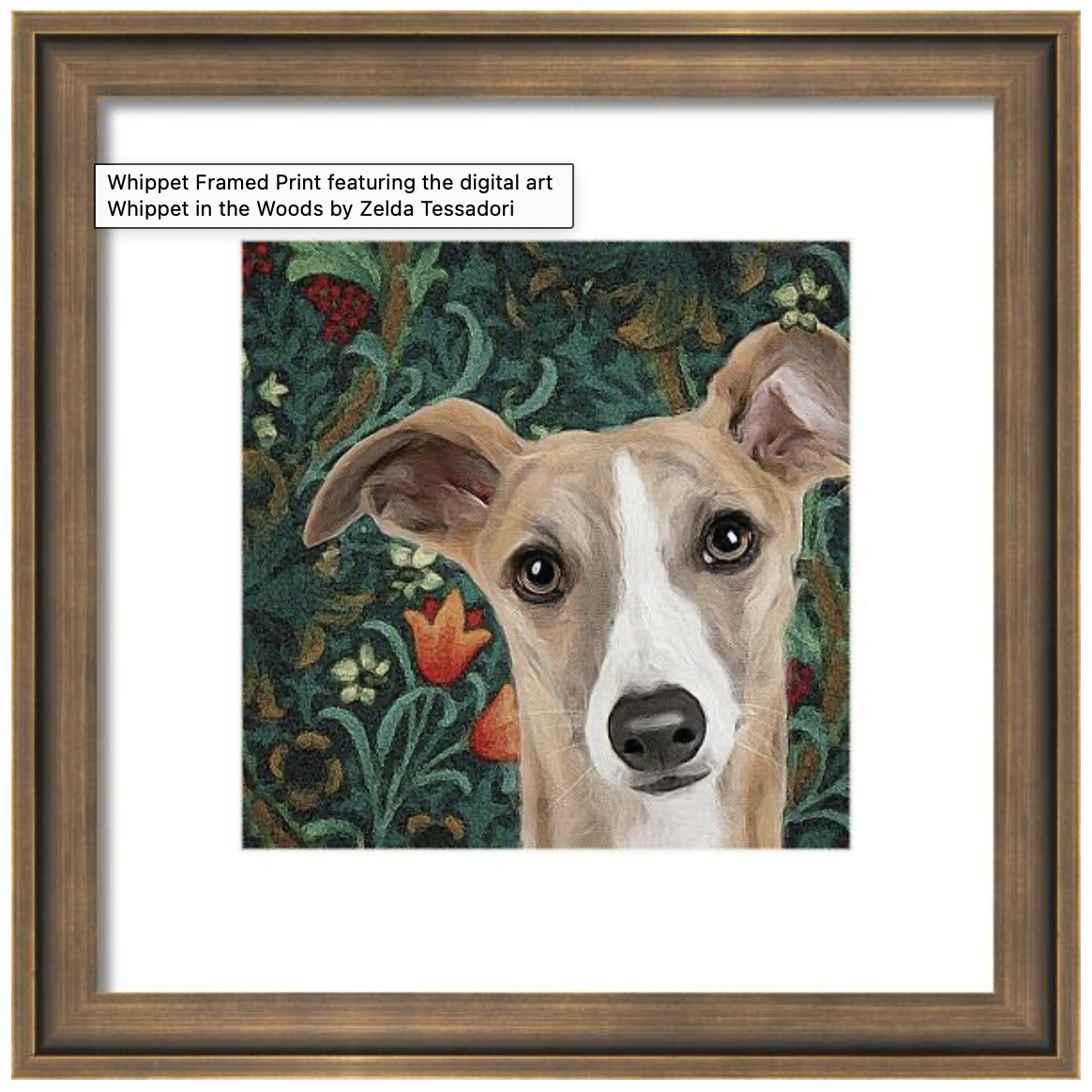Do you have a whippety question? Enter here your query or keyword.
- Home
- Whippet Puppies
- Whippet Puppy Feeding Guide
Whippet Puppy Feeding Guide: A Complete Nutritional Roadmap
This Whippet puppy feeding guide is designed to help you understand what to feed your puppy, how often to feed, and what nutritional elements are essential for their development.
When you welcome a new Whippet puppy into your home, one of the most important responsibilities you take on is ensuring they receive the right nutrition to grow into a happy, healthy adult.
Whippets are a unique breed. Known for their sleek build and incredible speed, they are lean, athletic, and have specific dietary needs. Unlike some larger or more robust breeds, Whippets are sensitive to changes in diet and can be prone to digestive issues if not fed correctly. This means it's crucial to get their feeding schedule and food quality right from the very beginning.
Why Feeding Matters: Whippet Puppy Nutritional Needs
During the first year of a Whippet’s life, they undergo rapid growth and development. Their bones, muscles, and organs are all forming at an astonishing pace. The right nutrition fuels this growth and builds a strong foundation for lifelong health. Puppies require a balanced diet rich in high-quality protein, healthy fats, carbohydrates, vitamins, and minerals.
Whippets, being naturally slim and energetic, benefit from a diet that supports their metabolism without leading to excessive weight gain. Overfeeding can lead to joint problems and obesity later in life, while underfeeding can result in stunted growth and nutritional deficiencies.

What to Feed: Choosing the Right Puppy Food
When selecting food for your Whippet puppy, it’s best to opt for high-quality commercial puppy food that is specifically formulated for medium-sized breeds. Look for the following on the label:
- Real meat as the first ingredient: Chicken, lamb, or fish are excellent sources of protein.
- Balanced fat content: Fat provides energy and supports healthy skin and coat.
- Complex carbohydrates: Brown rice, barley, or sweet potatoes offer sustained energy.
- Essential vitamins and minerals: Especially calcium and phosphorus for bone development.
Avoid foods with fillers like corn, soy, or artificial preservatives. These provide little nutritional value and may irritate your puppy's stomach.
Raw and homemade diets can be an option, but they must be carefully balanced. If you're considering going this route, consult a vet or a pet nutritionist to ensure your puppy gets everything they need.

Feeding Schedule: How Often Should You Feed Your Whippet Puppy?
Establishing a consistent feeding routine is just as important as choosing the right food. Puppies have smaller stomachs and higher energy needs, which means they require more frequent meals than adult dogs. A general guideline for a Whippet puppy feeding schedule is:
- 8–12 weeks old: 4 meals per day
- 3–6 months old: 3 meals per day
- 6–12 months old: 2 meals per day
Always feed your puppy at the same times each day. This helps with digestion, prevents overfeeding, and makes house training easier.
Measure each meal to ensure your puppy gets the right amount of food. Overfeeding can stress growing joints and lead to obesity, while underfeeding may result in nutrient deficiencies. Most quality puppy food brands include feeding guidelines on the packaging based on your dog’s weight and age.
Portion Sizes and Growth Monitoring
While feeding recommendations are helpful, every puppy is different. Whippets in particular can vary widely in their energy levels. Some are couch potatoes, while others are nonstop sprinters. Monitor your puppy’s growth closely and adjust portions as needed.
Signs your Whippet puppy is eating the right amount:
- They maintain a lean, muscular build without visible ribs.
- Their energy levels are appropriate and consistent.
- Their coat is shiny and their eyes are clear.
- They have regular, firm bowel movements.
If you notice sudden changes in weight, energy, or digestion, consult your vet. They may recommend switching foods or adjusting your feeding routine.
Hydration and Treats: Supporting a Balanced Diet
Water is just as important as food. Always provide fresh, clean water, and wash bowls regularly. Dehydration can quickly become dangerous for puppies, especially those as active as Whippets.
Treats can be a useful training aid, but they should only make up 5–10% of your puppy’s daily caloric intake. Choose healthy treats with minimal ingredients, and avoid anything with artificial colors or flavors. Never feed your puppy chocolate, grapes, onions, or other toxic foods.
Transitioning to Adult Food
Around 12 months of age, your Whippet puppy will be ready to transition to adult dog food. Make the change gradually over 7–10 days by mixing increasing amounts of adult food with decreasing amounts of puppy food. This helps avoid digestive upset.
Choose an adult formula that supports lean muscle and overall wellness. Whippets don’t need a high-calorie food once they’ve finished growing, so opt for a balanced option with moderate fat content.
Common Feeding Mistakes to Avoid
Even well-meaning puppy owners can make mistakes. Here are some common feeding errors and how to avoid them:
- Free feeding: Leaving food out all day can lead to overeating. Stick to scheduled meals.
- Feeding adult dog food too early: Puppies need the extra nutrients found in puppy-specific formulas.
- Sudden diet changes: Always transition slowly between foods.
- Over-relying on treats: Use them sparingly to prevent weight gain.
- Ignoring signs of allergies or sensitivities: Vomiting, diarrhea, or itching could indicate a problem with the food.
Final Thoughts: Raising a Healthy Pup with the Whippet Puppy Feeding Guide
Feeding your Whippet puppy doesn’t have to be complicated, but it does require attention to detail and consistency. Following this Whippet puppy feeding guide will help you build healthy habits from the start, ensuring your new companion gets the nutrition they need for a vibrant, active life.
With the right food, proper portions, and a bit of patience, you’ll set your pup on the path to a strong and happy adulthood. Remember: every dog is unique, so use this guide as a foundation and consult your vet to tailor your approach to your puppy’s specific needs.
By using this Whippet puppy feeding guide, you’re taking an important step toward giving your furry friend the healthiest start possible.
WSAVA Global Nutrition Toolkit – The World Small Animal Veterinary Association provides science-backed nutrition guidelines, including body condition scoring charts and feeding advice.


